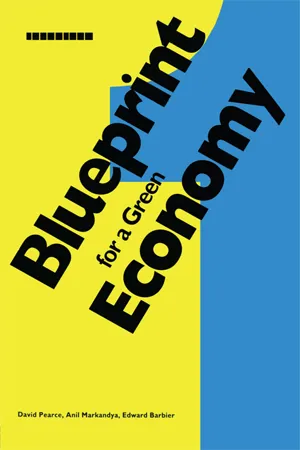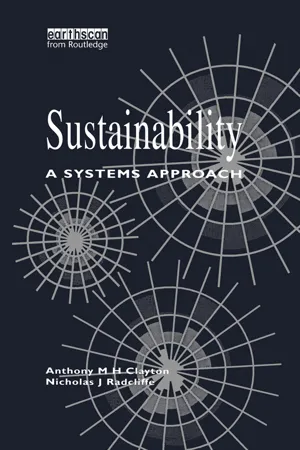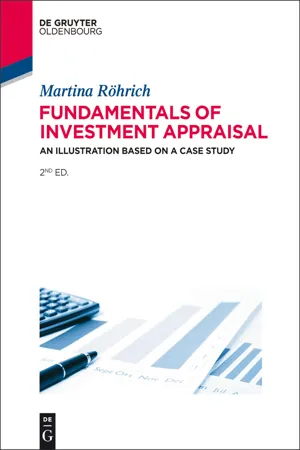Economics
Discounting
Discounting is a financial concept used to calculate the present value of future cash flows. It involves adjusting the value of future payments to reflect the time value of money, as money received sooner is worth more than the same amount received later. Discounting is commonly used in investment appraisal, bond pricing, and determining the value of long-term projects.
Written by Perlego with AI-assistance
Related key terms
6 Key excerpts on "Discounting"
- eBook - ePub
- Craig Langston(Author)
- 2013(Publication Date)
- Routledge(Publisher)
Discounting processes result in the calculation of ‘equivalent’ values that are useful in comparing alternative solutions involving cash flows that span over more than one year. Discounted present value is an ‘abstract’ measure that negates the need to explicitly consider finance costs while simultaneously allowing for the timing of cash flows. We need to remind ourselves consistently that we are comparing the worth of alternative systems and not their costs.The necessity to take account of the time value of money when comparing future costs and benefits is clear, but the mechanism employed to achieve this is not. Discounting is advocated generally in the literature as being the appropriate conversion tool, and indeed has widespread acceptance in appraising investment projects in practice. Yet some ‘mystic’ and criticism remains.One argument against the Discounting process is that it renders future costs and benefits insignificant when a lengthy time horizon is involved. The traditional Discounting method can reduce future costs to such an extent that their ability to influence decisions is essentially lost. But others conversely believe that this might be a convenient feature since the relative weight given to consequences declines with their degree of certainty, and thus the greatest weight tends to be given to those costs that are the most certain.Others have criticised Discounting on social grounds. As far as the balance between the present and future generations is concerned, Discounting gives more importance to the former. Discounting may therefore lead to decisions being made that are inadvertently biased against future generations.Future costs are worth less than their face value now because they can be secured by investing a smaller sum today that will grow with interest to the sum required at a particular date in the future. The effect of Discounting is to estimate the value of this fund which, if provided at the inception of the project, would finance not only the initial capital investment but have enough left over, together with the interest it would earn when reinvested, to pay for the recurrent expenses over the life of the building. Of course, the reality of having such a fund available from the outset is incredible. Discounting must be seen as a theoretical value adjustment only. - eBook - ePub
Blueprint 1
For a Green Economy
- David Pearce, Anil Markandya, Edward Barbier(Authors)
- 2013(Publication Date)
- Routledge(Publisher)
6 Discounting the FutureDOI: 10.4324/9781315070223-6The nature of Discounting
Chapter 1 explained that economic analysis tends to proceed on the basis that “economic value” reflects people’s preferences. Those preferences exhibit themselves in market and non-market situations, and there is no rational basis for designing economic policy as if only some preferences mattered, i.e. those expressed in the market place.But individuals also express preferences about when benefits and costs are desired. Typically, the later a cost or benefit occurs, the less it matters. The implicit weighting of the present over the future is known as Discounting and the rate at which the weight changes is the discount rate. Simple rationales for Discounting are as follows.Suppose that you are offered £1 now or you can wait for that £1 until next year. Assume for the moment that you are certain to be alive next year and the availability of the £1 next year is guaranteed. Will you wait or will you prefer to have the £1 now? Since the sum is the same, any preference exhibited for taking the money now is an instance of Discounting. Typically, people will take the money now. Why? There are several reasons.(i) With the £1, capital can be purchased, which can then be put to productive use. The existence of such productive opportunities means that in a year’s time the capital plus what it has generated will be worth more than £1, say £1.10. Effectively, then the choice becomes one of accepting £1 now or £1.10 next year. In the economist’s language, there is positive capital productivity. So, the first reason for Discounting is capital productivity.(ii) Even if capital investment was not productive in the sense outlined above people would still probably prefer the £1 now rather than next year. This is because people are impatient, or, to use the economist’s language, they have time preference - eBook - ePub
- Craig Langston(Author)
- 2008(Publication Date)
- Routledge(Publisher)
There is great institutional convenience in the uniform adoption of a standard form of appraisal; it seems to offer consistency, even if only in the form of consistent error. Compromises have been sought that modify Discounting incrementally so that its long-term effects are less severe. But most agree that Discounting is so firmly entrenched that it cannot readily be displaced, even if such action was considered appropriate(Price, 1993). 20.2 The rationale for Discounting Discounting is defined as the means by which equivalent value is determined. Costs and benefits that arise in different time periods must be brought to a common base so that a proper comparison can be made. This comparison concerns not just the timing of cash inflows and outflows for a given project, but the relationship of cash flows across projects. Therefore Discounting is a decision-aiding technique that enables alternative investments to be evaluated and ranked. Discounting processes result in the calculation of ‘equivalent’ values that are useful in comparing alternative solutions involving cash flows that span over more than one year. Discounted value is an ‘abstract’ measure that negates the need to explicitly consider finance costs while simultaneously allowing for the timing of cash flows. Ashworth (1999) warns that we need to remind ourselves consistently that we are comparing the worth of alternative systems and not their costs. Robinson (1986, pp. 18-19) confirms that in the context of life-costs: The problem areas generally arise as such because potential users of the technique are misled by the idea that the life cycle cost outcome must stand by itself in absolute terms. A little thought will lead to the conclusion that this is not possible. The life cycle cost outcome is only useful as a comparative figure for the purpose of ranking one solution over another - eBook - ePub
Sustainability
A Systems Approach
- Tony Clayton, Nicholas Radcliffe(Authors)
- 2018(Publication Date)
- Routledge(Publisher)
Investment options are usually compared in terms of the revenues that each investment is expected to provide. The general principle of Discounting is that future revenues are discounted because they are assumed to be less valuable than current revenues. This, of course, tends to favour investments that offer greater short-term returns and militate against long-term investment.One of the most important reasons for Discounting is the existence of net productivity and interest rates. Capital invested today, at interest, will earn a profit. If the capital does not become available until tomorrow, then today’s potential profit is lost. This is why high interest rates generally covary with high discount rates.Discounting is also used for various other reasons. One factor is time preference. Under prevailing circumstances, people generally prefer to have returns on investment sooner rather than later. This is for a number of reasons:❑ People are impatient.❑ A given sum of money generally makes more of a difference to someone who is poor than someone who is rich. A trivial sum to a billionaire might seem like great wealth to someone on welfare. If an individual or a society is becoming or expects to become wealthier, therefore, it is reasonable to suppose that a given sum will make less of a difference to them in the future than it would today. Thus people prefer to have their returns sooner rather than later, as they anticipate that the later income will be worth less to them. This is termed the diminishing marginal utility of income.❑ There is a risk to the investor that he or she might die before a longterm investment matures.Clearly, there are a number of factors which make time preference entirely rational behaviour, and which tend to shorten the acceptable duration of an investment period. For example, conditions of extreme poverty oblige the sacrifice of long-term interests in order to secure short-term survival. Similarly, time preference tends to become more acute in times of social and economic uncertainty, as one cannot assume that any long-term investment will be safe. - eBook - ePub
- P M Rao(Author)
- 2016(Publication Date)
- Routledge(Publisher)
From the above expression for r(t), it is readily observed that even when the utility rate of discount is set equal to zero, the SRTP will be positive as long as consumption is growing over time. The consumption rate of discount need not equal the utility rate of discount. Thus, Discounting benefits and costs at a positive rate does not necessarily entail lesser weight to the welfare (as measured by utility) of future generations or the future itself. There is no contradiction between those who claim that the well-being of future generations should not be discounted and those who argue that future incomes should not be discounted at a positive rate. However, this reasoning may not entirely hold sway in economies where future prospects of higher consumption levels are bleak.Optimization and decision frameworks should be capable of responding to new information and should take into account the option value of alternate courses of action from time to time. This can be carried out with an endogenized discount function and recursive utility framework. In general, time preferences comprise at least two effects: (1) relative value attached to present consumption (in relation to the level of consumption), and its comparative valuation of a future specified level of consumption at a specified time point, and (2) impatience as defined by pure time preference (for a given level of consumption).Discount Factors and Discount RatesThe use of discount rates is closely tied to the implicit and explicit framework governing the configuration of CBA. It is important to note that a constant rate of time-Discounting does imply the independence of the discount factor at any time point of the underlying consumption path (and hence, also, of the corresponding changes in other related factors). Where there exist significant income distributional effects of policies and compensation adjustments not automatically attainable with the deployment of other policy instruments, Bradford (1997) suggested that simple aggregation of gains and losses, in grand-scale programs like control of GHGs, is unlikely to provide a convincing basis for action, as an ethical matter, or predictor of policy in political economy. The implications of very high discount rate are that too little value is placed on future possibilities like global warming; conversely, a very low discount rate could lead to too much investment in the control of potential global warming problems and thus drive out possibly more efficient or better uses of resources. A study by the U.S. National Academy of Sciences (Stern et al. 1992) concluded that (1) if current economic activity tends to destroy the fundamental life support systems on which human survival depends, no amount of investment at compound interest could ever recoup this cost; and (2) market-based discount rates like interest rates do not usually correspond to social valuation of the long run, the horizon relevant in global climate change issues. - eBook - ePub
- Martina Röhrich(Author)
- 2014(Publication Date)
- De Gruyter Oldenbourg(Publisher)
3 Discounting Methods ofInvestment Appraisal
3.1 Learning Objectives
In the previous chapter, we examined non-Discounting methods of investment appraisal. The intention of this chapter is to provide an overview of the Discounting methods of investment appraisal. Upon its completion the reader will be able to- – understand what the main Discounting methods of investment appraisal are;
- – apply the financial mathematics involved in the discounted cash flow techniques and
- – gain an insight into the advantages and disadvantages of each presented method.
Furthermore, the comparison of alternatives and the replacement decision are presented as major problems of investment decisions. Salvage values at the end of the estimated life of the asset no longer require a separate section because by the Discounting methods of investment appraisal they are treated like normal cash inflows. Exercises and answers will deepen and consolidate the understanding of the Discounting methods of investment appraisal.3.2 Time Value of Money
3.2.1 Basic Example
To start with, we refer to an easy example. Consider a firm that wants to buy a new car. Table 3-1 describes the alternatives to assess:Table 3-1 Basic example of the time value of moneyVehicle A Vehicle B Initital outlay in € 10,000 15,000 Anticipated average life in years 5 5 Interest rate in % 5 5 Maintenance and repair in € per year 1,250 125 To identify the differences between the non-Discounting and Discounting methods of investment appraisal in Table 3-2 we begin again by applying the cost comparison method:Table 3-2 Cost comparison for the basic exampleVehicle A Vehicle B Depreciation 2,000 3,000 Imputed interest 250 375 Maintenance and repair 1,250 125 Total costs 3,500 3,500 The cost comparison method does not lead to a correct decision because the average total costs per year are equal. If we additionally assume that both alternatives yield average annual receipts of € 5,000 and afterwards run the profit method, then again both alternatives are ranked the same. The annual average accounting profit is € 1,500 for vehicle A as well as for vehicle B.
Learn about this page
Index pages curate the most relevant extracts from our library of academic textbooks. They’ve been created using an in-house natural language model (NLM), each adding context and meaning to key research topics.





